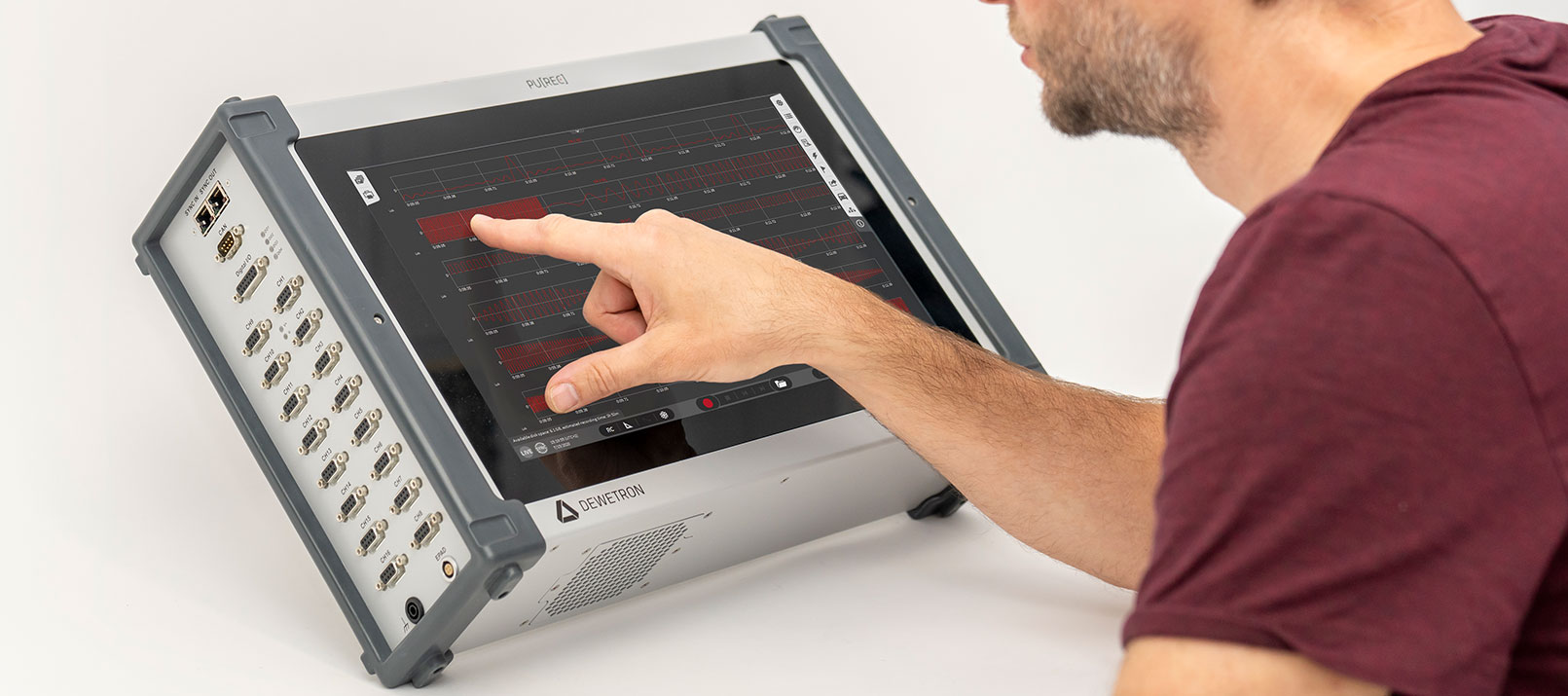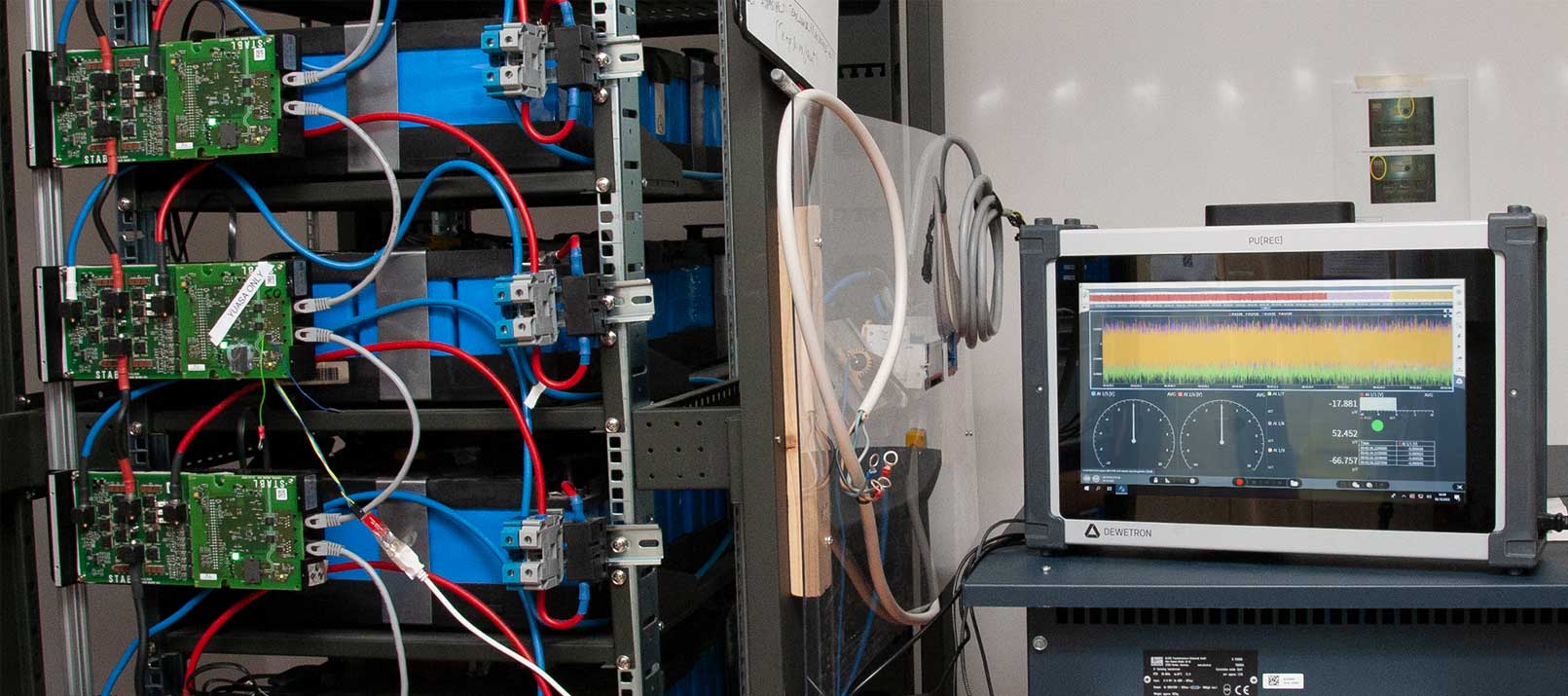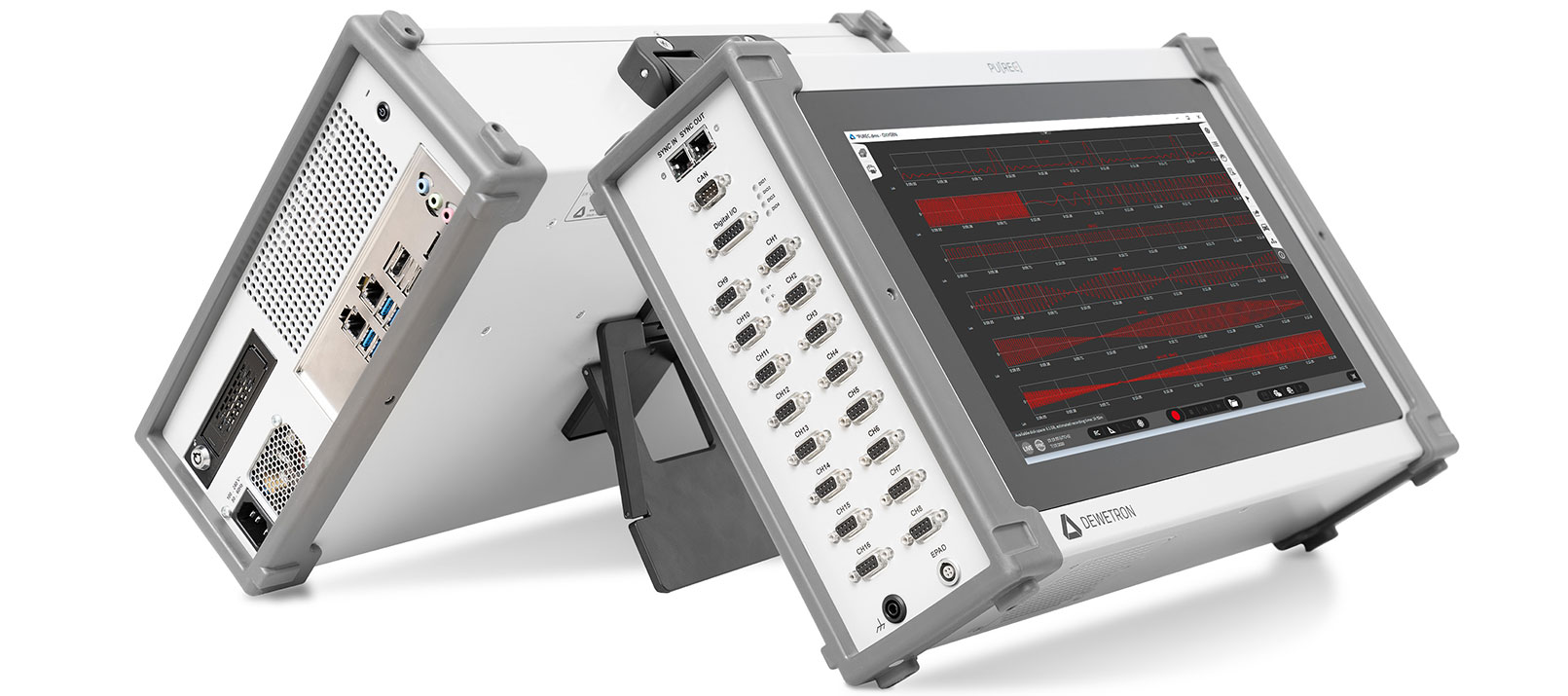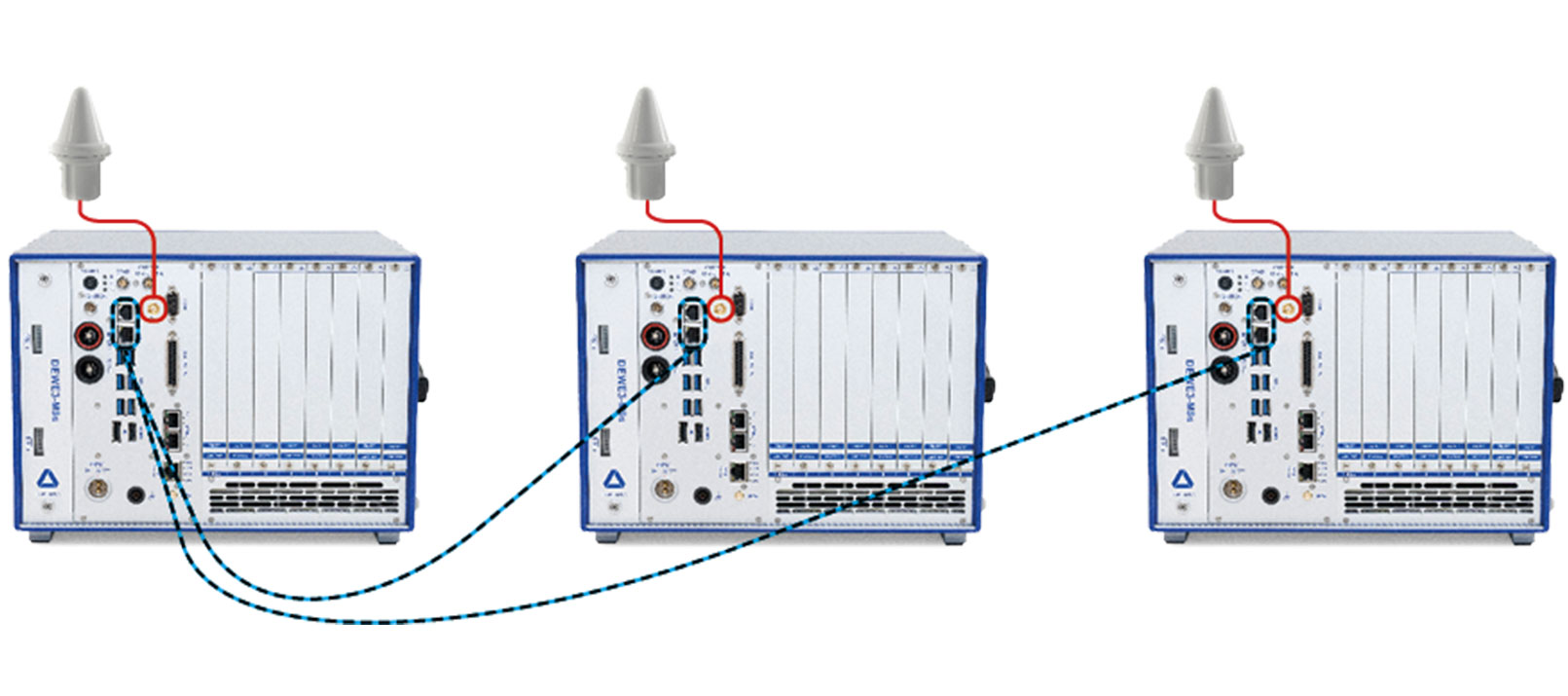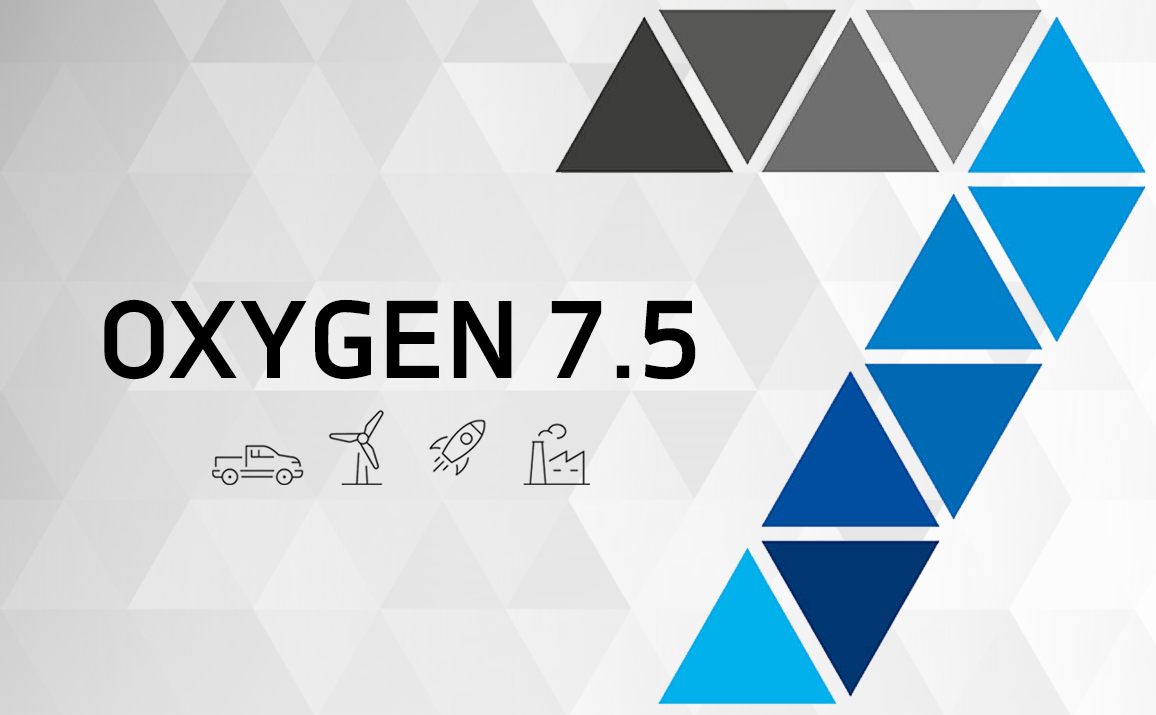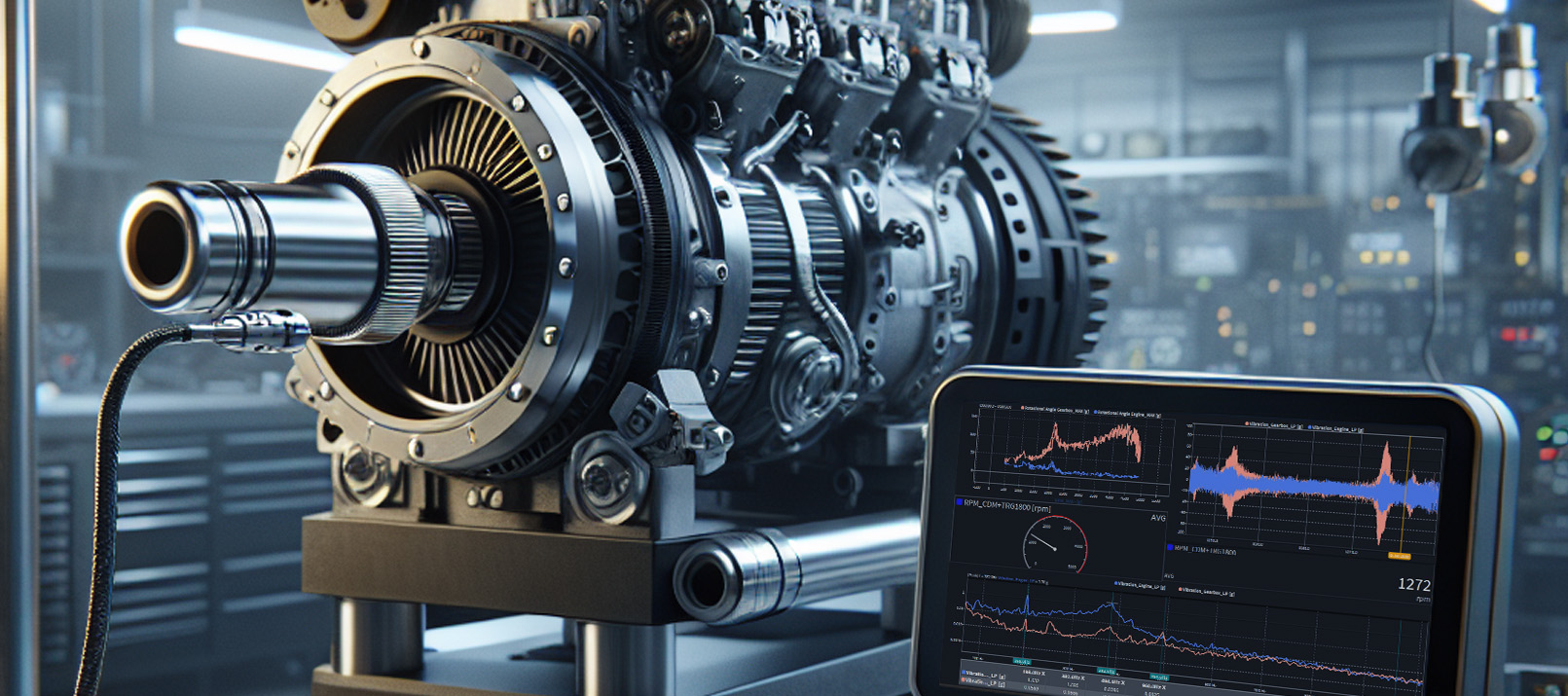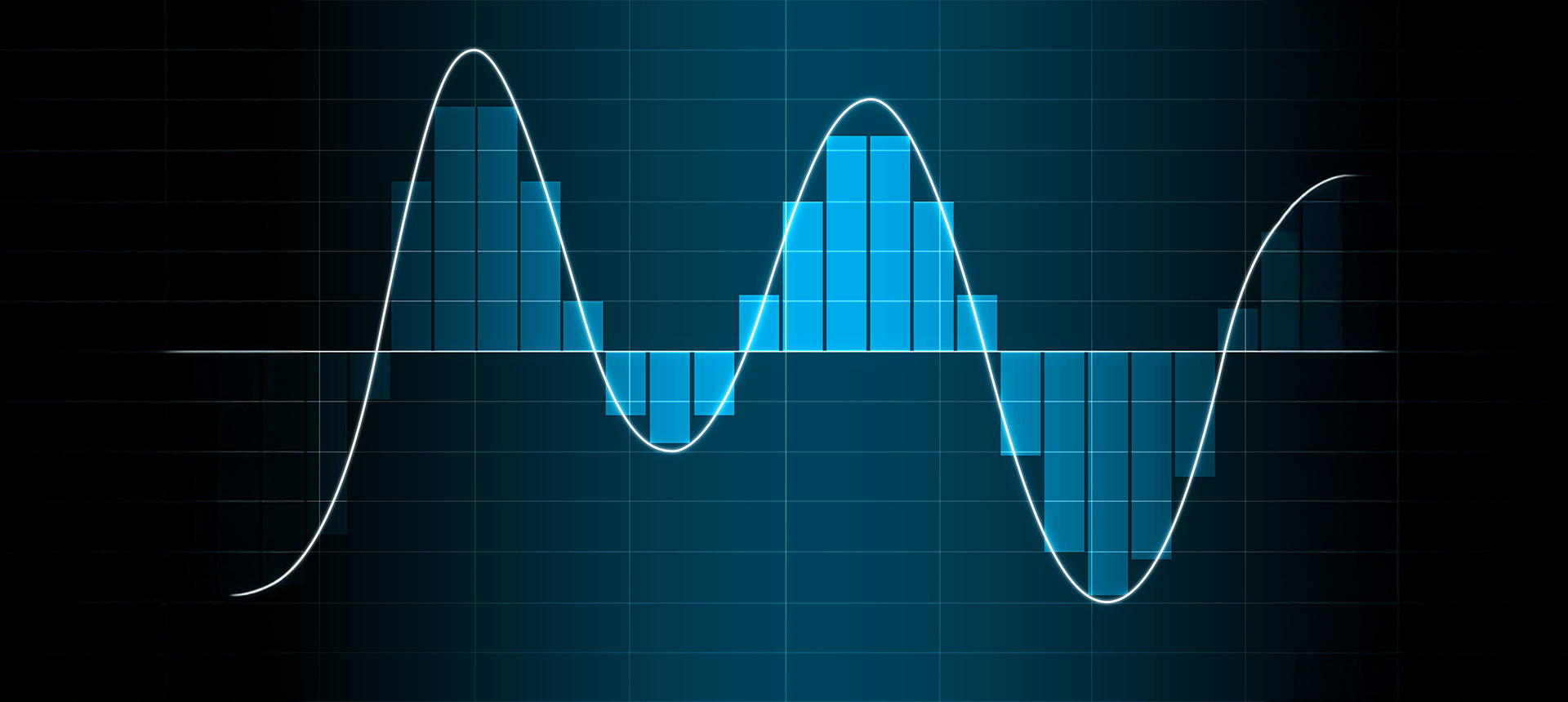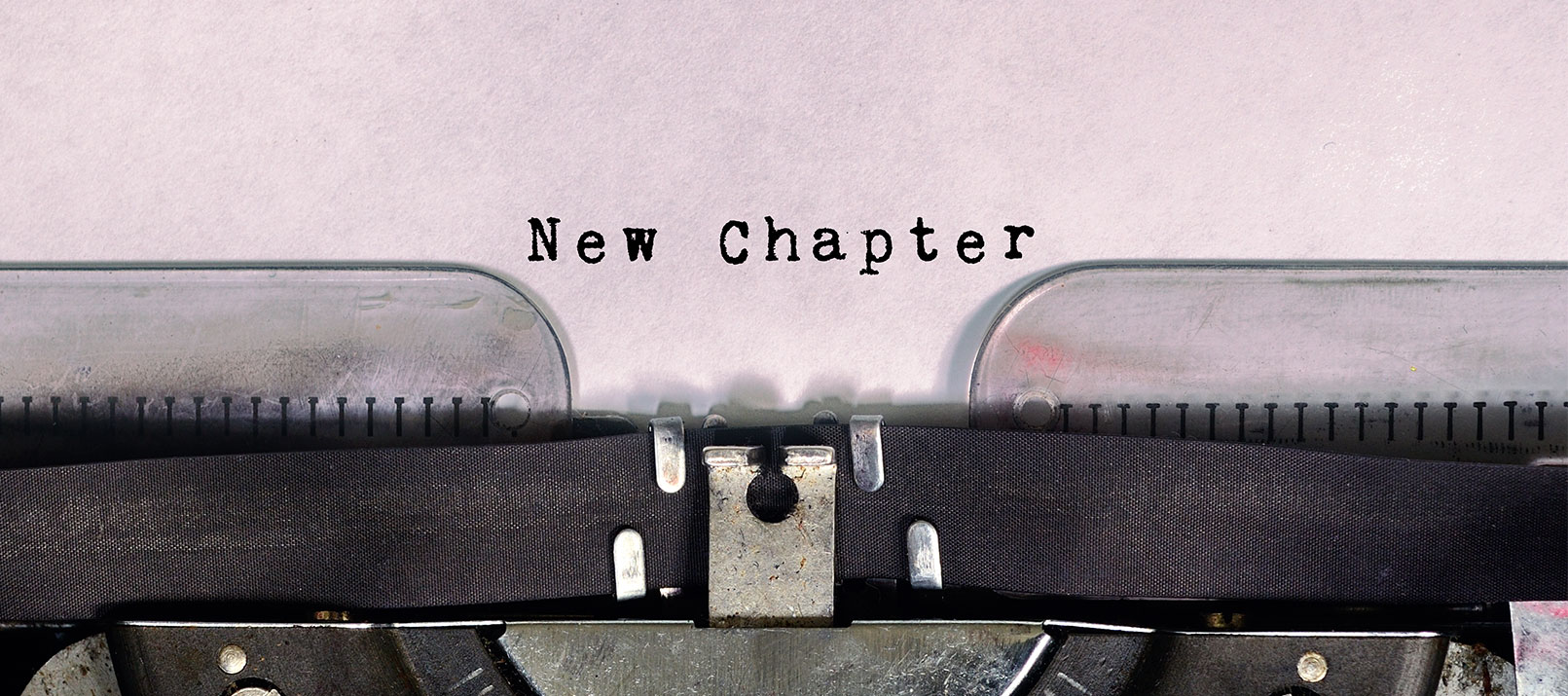FAQ: What you should know about our new PU[REC]
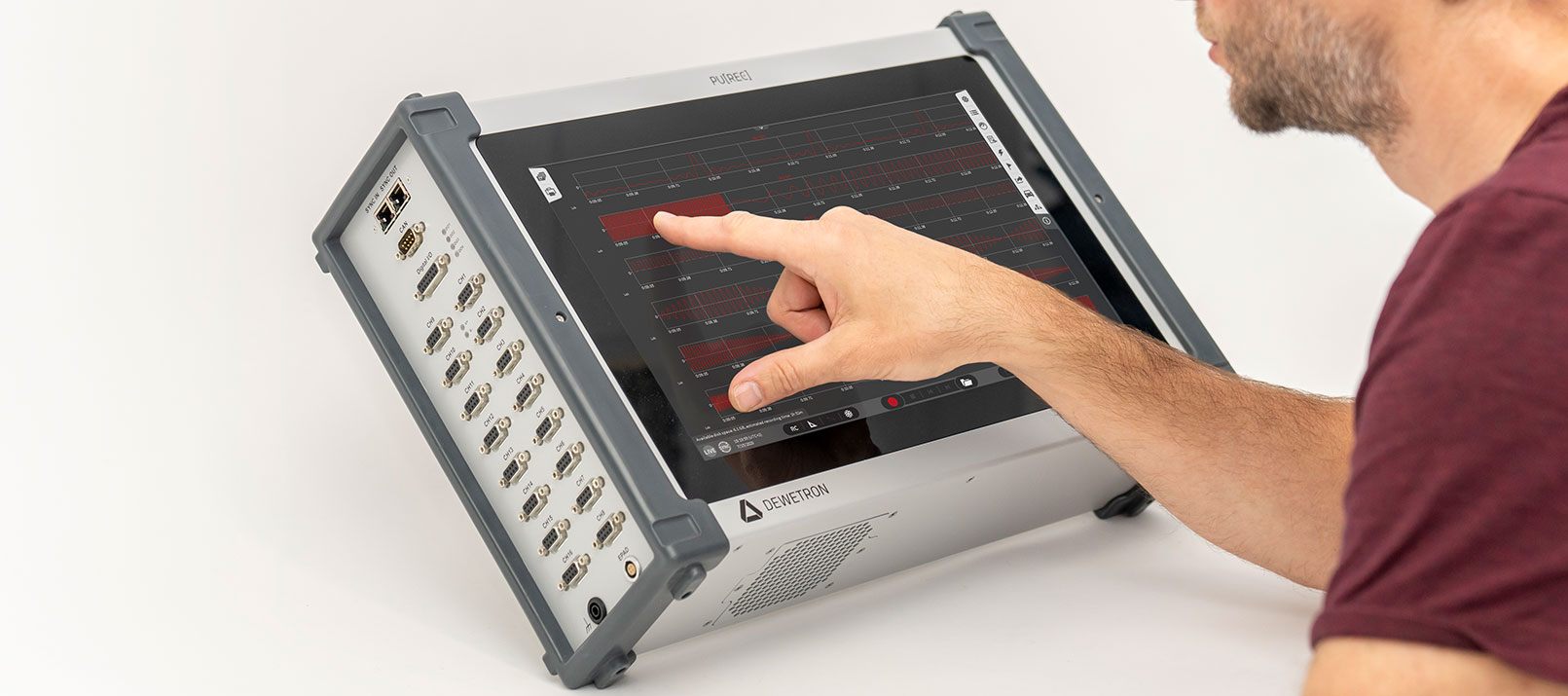
Do you already know PU[REC], the new data recorder from DEWETRON? For all of you who are not yet familiar with our newest measurement system, here’s a brief summary:
With PU[REC] you can easily record and analyze the data of electrical or mechanical components in different areas. The data recorder has a rugged chassis and a portable design. These characteristics make the PU[REC] your partner for every measurement task – even in harsh environments. Field tests in industries like aerospace & defense, industrial & manufacturing, automotive or energy & power analysis are easier than ever with the new PU[REC].
What is the new PU[REC] able to do?
Decide for yourself whether you need the PU[REC] with a sample rate of 50 or 200 kS/s, with or without CAN interface and with additional options for our measurement software OXYGEN. The 16 available analog input channels support +/- 10 V directly. With the PU[REC] you can acquire almost any signal – simply use one (or more) of the nine available Modular Smart Interfaces (MSI) in front of the analog input. The option of adding a quasi-static channel expansion module to the PU[REC] provides additional measurement inputs for voltage, current, temperature or resistance. Here you can find all technical specifications at a glance.
Before deciding to purchase a high-precision measurement instrument, many questions might arise. Especially if the device is completely new on the market. We prevent you from losing the overview between specifications, features and expansion possibilities. For that purpose, we have summarized the most important questions and answers about the new PU[REC] for you below:
Questions & answers about the new PU[REC]
Is the PU[REC] available in a standard version?
In contrast to all modular DEWETRON instruments, you may know so far, the PU[REC] is only available in a standard version available with either a sampling rate of 50 or 200 kS/s.
Which options are available to extend the PU[REC]?
The PU[REC] is available with a sample rate of 50 or 200 kS/s. Additionally, it can be extended with high-speed CAN.
As optional software features, OXYGEN-NET for distributed and synchronized data acquisition and remote control via Ethernet, CAN-OUT for transfer of measurement data via CAN (configuration with .dbc file) and ETHERNET RECEIVER for receiving UDP packages via Ethernet, are available separately. An extension of the maintenance period by one year is also possible.
How much does the PU[REC] cost?
The PU[REC] with a sample rate of 50 kS/s cost 11.500 USD (€ 8.500), with 200 kS/s, it is priced at 12.500 USD (€ 9.500). Depending on the required options (CAN-Extension, OXYGEN-NET, CAN-OUT, Ethernet-receiver, maintenance-extension), the basic price will be increased by 770-2.050 USD (€ 500 – 1.300).
Is it also possible to use the PU[REC] for high voltage applications?
All input channels of the PU[REC] have a standard input range of +/- 10 V. By adding Modular Smart Interfaces (MSI), the input range of +/- 10 V can be extended. Soon, the new MSI2-V-600 will also be available. It has been developed for high-voltage applications. With the new MSI you can measure up to 600 VRMS. Converted to peak values, this means +/- 1500 VPEAK that can be measured directly. With this extension, the PU[REC] can also be used for high-voltage applications.
Which export formats are possible with OXYGEN on the PU[REC]?
Our measurement software OXYGEN directly supports: CSV, TXT, Matlab, ASAM MDF4, *.wav, *.rsp (*.RPCIII)
Additionally, OXYGEN has a so-called DMD reader. This is a .dll-file that can be used as an import filter to directly import the native OXYGEN DMD data format into any other analysis software. A separate data export is not necessary. Learn more about our measurement software OXYGEN.
Is it possible to configure the system remotely vie a connected PC or notebook?
This is very easy via a remote desktop connection or a VNC connection. Important in this case is an Ethernet connection from the device to the PC that takes over the configuration. The configuration then simply works via screen sharing.
Which filter settings are possible?
Built-in IIR filters on hardware-side are used for anti-aliasing. These IIR filters have Bessel or Butterworth characteristics of 2nd, 4th, 6th or 8th order. As these are digital filters, the cut-off frequency can be freely defined. Digital IIR filters are positioned behind the AD converter. In front of the AD converter there is an additional analog anti-aliasing filter, whose cut-off frequency is automatically selected based on the cut-off frequency of the IIR filter.
The user configures the digital IIR filter and the analog anti-aliasing filter before the AD converter is adjusted automatically. If the cut-off frequency is set to ‘Auto’, usually none of the filters need to be configured and anti-aliasing is automatically ensured.
Is there a distance limit if you want to connect two PU[REC]s?
With the option OXYGEN-NET you can connect two PU[REC] devices and transfer data from one device to the other. OXYGEN-NET works via Ethernet and the maximum distance is 100 m. Even with the SYNC connection for data transmission, the devices may be apart by a maximum of 100 m.
How many PU[REC]s can be connected?
That depends on the amount of data that is transferred via the LAN network. By default, the PU[REC] devices have built in a 1 GB LAN interface. That means that about 100 MB of data can be transferred per second. If you already have specific use cases, applications or measurement requirements where the exact number of PU[REC] devices is relevant, do not hesitate to contact our Product Application Engineer Rafael for further information.
Can the CAN bus only be used to read data? Is a data transmission to CANape or CANoe also possible? If so, how does it work?
The PU[REC] can be optionally expanded with a CAN interface. This interface is used to acquire data from the CAN interface and decode it by using a .dbc file. Both the raw data stream and the decoded data are recorded. The PU[REC] also offers the option of sending data via the CAN interface and transmitting the raw data stream to CANape or CANoe. Once, a .dbc file must be loaded to be able to do this. The maximum output rate for signals to CANape or CANoe is 100 Hz.
When using CANape or CANoe, Rafael, one of our Product Application Engineers, recommends using the XCP interface, which is also included in the PU[REC]. This allows the PU[REC] to act as an XCP slave and simply transmit data to CANape and CANoe.
Can all 16 channels be transmitted via CAN?
Yes, it is possible to transmit all 16 channels via CAN-OUT option and send them to another CAN device. The maximum output rate is 100 Hz.
Can all 16 channels simultaneously be transmitted via CAN and be recorded internally?
As already mentioned, the PU[REC] is available with a sample rate of 50 or 200 kS/s. If a PU[REC] with a sample rate of 200 kS/s is used, the data of all 16 channels can be continuously transmitted and simultaneously stored on the device.
We are pleased that we were able to give you an insight into the features of our new data recorder PU[REC] and hope that you now know more about what applications can be realized with the new device.
